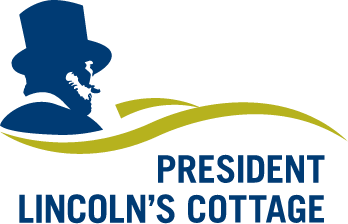7.2 Bonus Transcript
Callie Hawkins: Hi everyone – This is Callie and Joan from Q&Abe, a podcast by President Lincoln’s Cottage.
Joan Cummins: While we’re talking to experts for each episode, we sometimes end up with interesting or fun tidbits that don’t quite fit in the main episode, but we don’t think that should keep you all from hearing them.
CH: This bonus episode accompanies episode 7.2, Was it this hot when Lincoln was around?, so if you haven’t listened to that one yet, it might be a good place to start.
JC: In all his years of covering the weather in Washington DC with Capital Weather Gang, we wanted to know what was the craziest weather Jason Samenow had ever experienced?
Jason Samenow: I mean, in terms of the most violent weather I’ve experienced in the area would be the uh, 2012 June 29th derecho. You know, that came on so suddenly and was so intense that I don’t think the DC area has seen such a widespread violent thunderstorm, in my lifetime. So that was in terms of like an acute hard-hitting thunderstorm event the most extreme. And then obviously, I would say the Snowmageddon winter of 2009- 2010 when we had, uh, 56 inches of snow. That was, um, you know, a sort of a, a series of weather events, we had three blockbuster snowstorms that winter, that was pretty wild. And if you were there, there were back-to-back snowstorms, um, in February – there was a February 4th and 5th storm, which was called Snowmageddon, and then there was another storm about five days later, which was another 10 inches on top of that. Just the amount of snow that was on the ground at once in DC, I mean, you’re talking like 30 to 40 inches and, you know, they had to bring in like Bobcats and front loaders to like, clear the snow, and that was pretty wild. I just remember walking along Wisconsin Avenue, it was deserted after that second storm and the amount of snow and just the wind blowing the snow around and no one being on the roads – it was, it was, it was kind of surreal. So that was for me, a pretty cool event and a high impact event. That period from about like 2009 to 2012 was a pretty active one for extreme weather here in the DC area because we had Hurricane Irene, we had our three hottest summers on record, we had, um, that snowy winter, we had the derecho, and then there was also um, a snow storm, I think it was in January 2011, in which like, you know, there were like, cars stuck for like, it was called, we called it Commute-ageddon. It was a storm which came right at the height of – a snow storm which came at the height of rush hour, just like, traffic came to a standstill everywhere across the region. So all those events were within a few year period.
Callie: And Jason Hauser told us about some… creative… historical remedies for coping with the heat.
Jason Hauser: It’s not an easy story to hear, but we have a Works Progress Administration interviewer spoke with a formerly enslaved person, and he recalled a doctor from his community – and I believe this was Georgia – who actually wanted to combat heat stroke, wanted to figure out how to how to fight it. And so what he did was he dug a hole, he lit a fire, he let it turn to embers, he put a little soil on top of it and then he would bury African Americans up to their necks and see how long it took them to pass out. He would then give them different tonics to see if that would mitigate the effects of the high temperatures. As ever, we have to take these sources carefully and, you know, really put them through a rigorous historical lens, but it speaks, if nothing else, to the idea that they were experimenting with ways to work and work more productively in hot climates, despite the idea of heat stroke Other – and this is earlier, but 17th century physicians were also very concerned with this. William Lining was a Scottish physician, in the period where to be a physician what you needed was a sign that said you were a physician on your front door, and he was really taken with this Enlightenment notion of, of, of systematic inquiry and, and quantifying everything. And so he measured how much he sweat and things like that, uh, how much, um, bodily fluid he produced – in all ways, uh, quite graphic stuff. But he also said that he developed a heat tonic. And I looked into it, it’s rum and lime juice and sugar. So he invented a cocktail, but, uh, it seemed to work.
JC: Sometimes I hear about historical science, and I’m like wow, that was incredibly unethical but also such a direct approach to the problem… you’ll have to tell us if mojitos help you cope with the summer weather too.
CH: Thanks for listening, and we always appreciate it when you tell a friend about the show! We’ll see you again in a week with our next full episode.
JC: This episode was produced by me, Joan Cummins, with Callie Hawkins, Haley Bryant, and additional support from the President Lincoln’s Cottage team. Music for Q&Abe was written, performed, and is copyrighted by Clancy Newman.
CH: Q&Abe is made possible by listeners like you. You can support the show by joining Team Lincoln at www.lincolncottage.org, where you can also check out our other online and in-person programming. You can reach us at [email protected].
JC: President Lincoln’s Cottage is a home for brave ideas. Stay curious!
